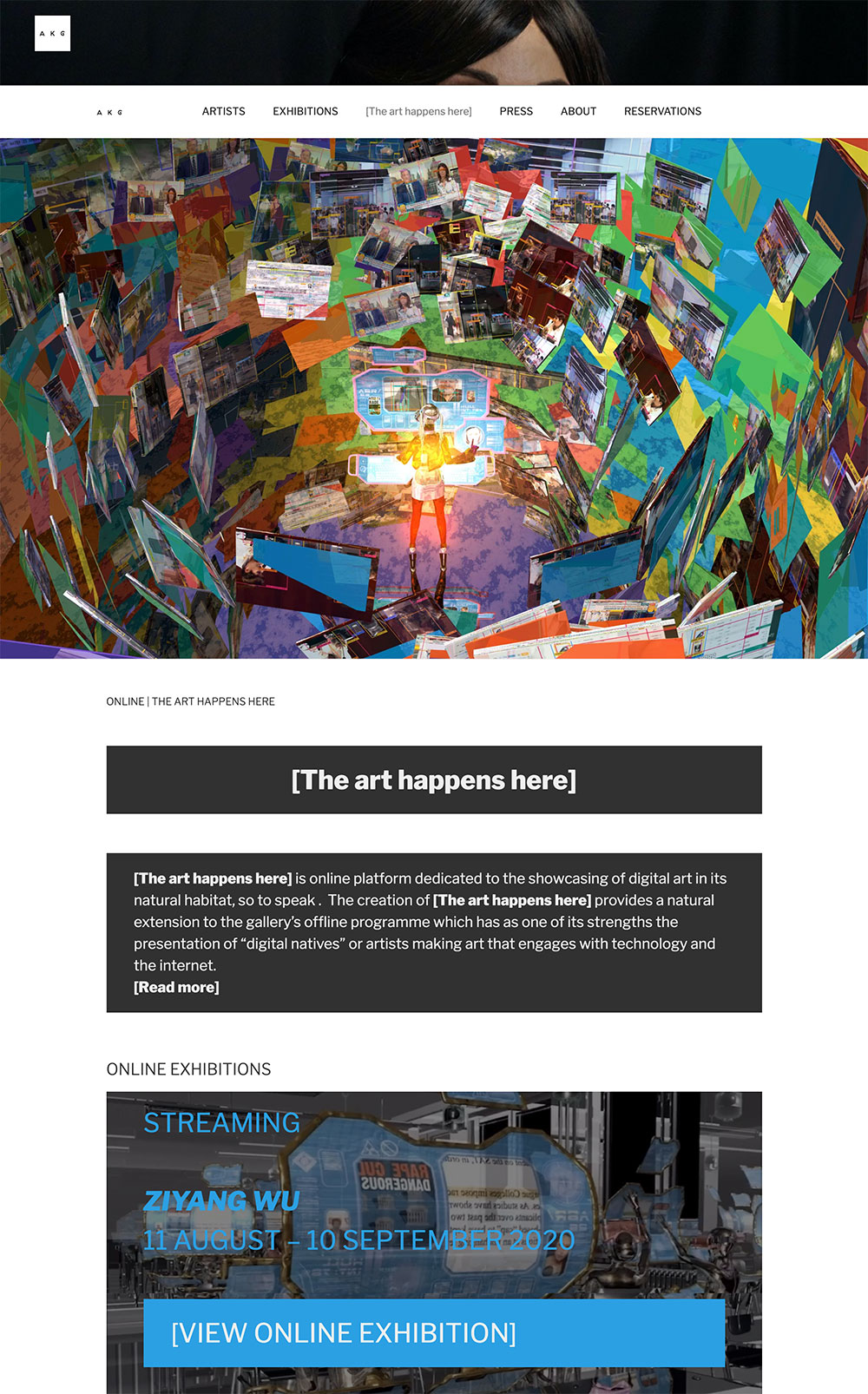A Woman with the Technology – Annka Kultys Gallery (Solo Exhibition)
ZIYANG WU
11 August – 10 September 2020
Link to the exhibition:
http://www.annkakultys.com/online/ziyang-wu-a-woman-with-the-technology/
PRESS RELEASE
Annka Kultys Gallery is pleased to present A Woman with the Technology, an art project by New York based artist, Ziyang Wu, realised as two video works, the first being a three-channel work (18 min 25 sec) and the second, an animated AI-script-generated single channel work (9 min 53 sec), both titled A Woman with the Technology. And while A Woman with the Technology is realised through the two videos, it is best thought of as the process the artist developed to create the works. Wu’s focus in the process was on artificial intelligence (AI) and the so-called ‘Filter Bubble,’ a term coined by the internet activist Eli Pariser for the state of intellectual isolation that can result from personalised searches when a website’s algorithm determines what information a user would like to see based on existing information about the user, such as location, past click-behaviour and search history. A Woman with the Technology therefore examines how an individual’s online experience becomes personalised by internet algorithms resulting in the user becoming separated from information that disagrees with their existing viewpoint, effectively isolating them in their own cultural and ideological bubble.
Wu’s process involves four stages: first, daily recording of his internet activity; second, archiving and data analysis of that activity; thirdly, the creation of the three-channel video work; and fourth and finally, creating the animated video based on an AI-generated script.
Research and data collection plays a vital role throughout the process. During the recording stage (which took approximately 3 months), a series of keywords related to the artist’s daily internet focus were selected and used as initial inputs on various media platforms such as Instagram, Facebook and YouTube. The keywords for A Woman with the Technology included censorship, surveillance, alienation, absurdity, neo-colonialism, post truth, trade war, Asian experience, 5G, artificial intelligence, mixed reality, K-pop and identity, among others. Wu developed the data by logging in to his social media every day (using new ‘virgin’ accounts created especially for the project), and providing likes or leaving comments on the posts and videos he is interested in. Wu’s daily searching experiences are screen-recorded and organised for further analysis during the archiving stage.
From the second stage, the archiving process makes clear how the internet algorithms (using a user’s interests, frequency of access and various relationships) change the keywords and the related data and images derived from them in the form of sketches, diagrams and Excel forms.
Stage three witnesses the creation of the three-channel video in collaboration with fellow artist Yang Wang. Through deployment of image detection technology, the three-channel video visually presents the information the internet algorithms ‘see’ in the archives and demonstrates the inter-connectedness of the filter bubbles the algorithms created for Wu.
The final stage of Wu’s process sees the creation of the animated video from an AI-generated script produced by an AI chatbot from conversations with Wu. The AI-chatbot is trained to use all the collected data (captions, subtitles and image detection data) from the information in the archive and the earlier three channel video work. Through Wu’s conversations with the chatbot, it generates a narrative script and Wu in turn produces the animated-video based on the AI-generated script.
With Ziyang Wu’s A Woman with the Technology, Annka Kultys Gallery builds on earlier exhibitions by represented artist Signe Pierce with her notion of the ‘Simulatrix’ and Bill Posters’ ‘deep fake’ new media works that highlighted the challenges posed by fake news in his online Dissimulation show to continue its exploration of how the internet and social media are being used to intellectually isolate individuals, polarise debate in the public sphere, create alternative realities for users and generally contribute to the decline in tolerance and understanding within contemporary society.

BIOGRAPHY
Ziyang Wu’s practice is centred on how the virtual world micro-alienates individuals in our ‘post-digital’ and highly atomised society with a focus on notions of trade wars, 5G networks, Black Mirror reality technology and algorithm bias, translating his ideas into art through video, augmented reality, social practice, AI simulation and interactive video installations. The artist describes his work as “post-internet micro-alienation,” for its ability to deep-dive into “contemporary technology, digital power structures and the dynamics between identity and community, as well as the alienation of an individual’s spirit and body.”
Ziyang Wu was born in 1990 in Xuzhou, Jiangsu Province, China and lives and works in New York. In 2014, he gained his BA in painting at the Florence Academy of Fine Arts, in Florence, Italy, before moving to the United States. In 2016 he received an MFA at Rhode Island School of Design. Wu currently teaches at the School of Visual Arts and is a member of the Experiment on Art and Technology Track at NEW INC, New Museum in New York City.
A select exhibition history of the artist includes museum shows at: Times Art Museum, Beijing, China (upcoming); Institute of Contemporary Art, Philadelphia, PA, USA (2019); Powerlong Museum, Shanghai, China (2018); and Walker Art Center, Minneapolis, MN, USA (2017).
Wu has received numerous fellowships and has participated in many residencies including the Residency Unlimited (RU), the MacDowell Colony Fellowship, Artist-in-residence at Institute for Electronic Arts (IEA) at Alfred University, Art(ists) on the Verge Fellowship by Northern Lights.mn and Jerome Foundation, the AICAD Teaching Fellowship by Association of Independent Colleges of Art & Design and the Winner of The ROCI Road to Peace exhibition by Robert Rauschenberg Art Foundation and Artsy.
